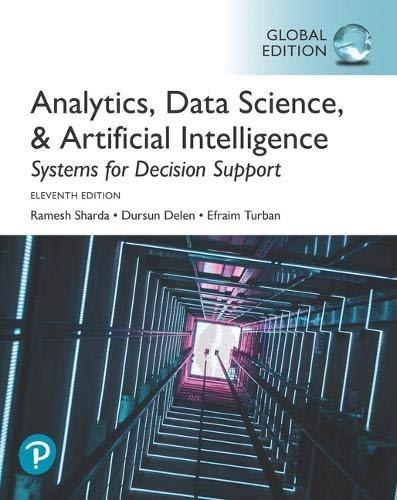Analytics has been used by many businesses, organizations, and government agencies to learn from past experiences to
Question:
Analytics has been used by many businesses, organizations, and government agencies to learn from past experiences to more effectively and efficiently use their limited resources to achieve their goals and objectives. Despite all the promises of analytics, however, its multidimensional and multidisciplinary nature can sometimes disserve its proper, full-fledged application. This is particularly true for the use of predictive analytics in several social science disciplines because these domains are traditionally dominated by descriptive analytics (causal-explanatory statistical modeling) and might not have easy access to the set of skills required to build predictive analytics models. A review of the extant literature shows that drug court is one such area. While many researchers have studied this social phenomenon, its characteristics, its requirements, and its outcomes from a descriptive analytics perspective, there currently is a dearth of predictive analytics models that can accurately and appropriately predict who would (or would not) graduate from intervention and treatment programs. To fill this gap and to help authorities better manage the resources, and to improve the outcomes, this study sought to develop and compare several predictive analytics models (both single models and ensembles) to identify who would graduate from these treatment programs.
Ten years after President Richard Nixon first declared a "war on drugs," President Ronald Reagan signed an executive order leading to stricter drug enforcement, stating, "We're taking down the surrender flag that has flown over so many drug efforts; we are running up a battle flag." The reinforcement of the war on drugs resulted in an unprecedented 10-fold surge in the number of citizens incarcerated for drug offences during the following two decades. The skyrocketing number of drug cases inundated court dockets, overloaded the criminal justice system, and overcrowded prisons. The abundance of drug-related caseloads, aggravated by a longer processing time than that for most other felonies, imposed tremendous costs on state and federal departments of justice. Regarding the increased demand, court systems started to look for innovative ways to accelerate the inquest of drug-related cases. Perhaps analytics-driven decision support systems are the solution to the problem. To support this claim, the current study's goal was to build and compare several predictive models that use a large sample of data from drug courts across different locations to predict who is more likely to complete the treatment successfully. The researchers believed that this endeavor might reduce the costs to the criminal justice system and local communities.
Questions for Case
1. What are drug courts and what do they do for the society?
2. What are the commonalities and differences between traditional and modern base methods in studying drug courts?
3. Can you think of other social situations and systems for which predictive analytics can be used?
Step by Step Answer:

Analytics Data Science And Artificial Intelligence Systems For Decision Support
ISBN: 9781292341552
11th Global Edition
Authors: Ramesh Sharda, Dursun Delen, Efraim Turban





